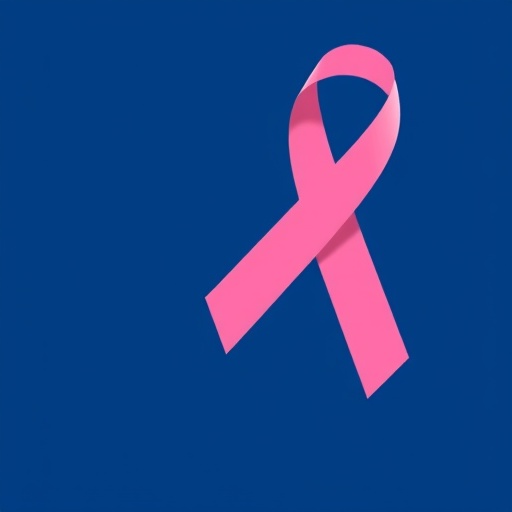In the constantly evolving battle against cancer treatment side effects, a new beacon of hope has emerged for patients undergoing carboplatin chemotherapy. Chemotherapy-induced nausea and vomiting (CINV) stands as one of the most distressing and common adverse effects experienced by patients, often leading to diminished quality of life and even incomplete treatment adherence. Despite the wide use of prophylactic antiemetic regimens, nausea remains a stubborn clinical challenge. Recent clinical research sheds light on the potential of combining olanzapine with conventional triple antiemetic therapy to significantly curb carboplatin-induced nausea.
The research, a pooled analysis of two rigorous clinical trials conducted under controlled settings, enrolled chemotherapy-naïve patients at least 20 years of age who were scheduled to receive their first course of carboplatin-containing chemotherapy for solid tumors. This comprehensive approach ensures that findings are robust and reflective of a real-world scenario, where nausea management can profoundly impact patient outcomes. The studies included a single-arm phase II trial and a randomized, double-blind, placebo-controlled phase III trial with very similar inclusion criteria and therapeutic regimens.
Patients in the experimental group received olanzapine at a dose of 5 mg daily, administered after dinner from day one through day four post-chemotherapy. This was in combination with a neurokinin-1 (NK1) receptor antagonist aprepitant, a 5-hydroxytryptamine-3 (5-HT3) receptor antagonist, and dexamethasone, creating a multifaceted antiemetic cocktail designed to target different pathways responsible for inducing nausea and vomiting. The control group received a placebo alongside the standard triple antiemetic therapy, ensuring the study’s findings could be attributed directly to the addition of olanzapine.
The primary endpoint centered on the proportion of patients who remained free from nausea throughout the overall assessment period spanning the first 120 hours post-chemotherapy. This time frame captures both the acute and delayed phases of CINV, which are critical to patient comfort and treatment compliance. Statistical analysis included intergroup comparisons with 95% confidence intervals to delineate the efficacy of olanzapine-enhanced therapy compared to placebo.
Results revealed a striking improvement in the control of nausea among patients receiving olanzapine. Approximately 87.5% of olanzapine-treated patients reported being free from nausea, a significant leap compared to 75.0% without olanzapine. This 12.5% absolute increase in nausea-free patients underscores olanzapine’s pivotal role in enhancing antiemetic effectiveness in the carboplatin setting. Furthermore, appetite loss, a common secondary concern correlating with nausea, was also better managed in the olanzapine cohort, with a difference in appetite preservation of over 20% relative to placebo.
Beyond nausea control, the olanzapine group showed higher overall complete response rates—defined as no vomiting episodes and no need for rescue medications—at 88%, compared with 80.6% for those receiving placebo. This finding is remarkable because it illustrates not only reduction in subjective nausea sensation but also a tangible decrease in vomiting events, which have more severe physiological consequences. Olanzapine’s multifactorial receptor blockade, impacting dopaminergic, serotonergic, and histaminergic pathways, likely underpins this superior control.
A multivariable logistic regression analysis highlighted the absence of olanzapine use as a significant predictor of nausea occurrence, confirming the drug’s independent beneficial effect. Other patient-related factors—such as age, sex, and cancer type—were less predictive in comparison, emphasizing olanzapine’s contribution when added to a well-established antiemetic regimen. This evidence points towards olanzapine becoming a standard adjunctive therapy for carboplatin-induced CINV.
The implications of these findings are profound. Clinicians have long grappled with the challenge of managing delayed-phase nausea, which has proven resistant to conventional therapies. The integration of olanzapine promises to reshape current prophylactic strategies, potentially reducing the overall clinical burden of CINV and improving patient adherence to essential chemotherapy schedules. Importantly, olanzapine’s dosage of 5 mg appears both efficacious and tolerable, balancing symptom control with minimal adverse effects.
Moreover, this pooled analysis bridges data across trial designs and patient populations, validating the reproducibility of olanzapine’s benefits. It also underscores the importance of multimodal approaches attacking nausea pathways from different angles—NK1 receptor antagonism, serotonin-3 receptor blockade, corticosteroid anti-inflammatory action, and dopamine receptor antagonism through olanzapine. Such comprehensive intervention is key to overcoming nausea’s multifactorial pathophysiology.
These results pave the way for further investigation into olanzapine’s role across other chemotherapy agents beyond carboplatin, many of which also induce significant nausea. Additionally, future research may explore the optimal timing, dosing, and duration of olanzapine administration to maximize therapeutic outcomes. Patient-reported outcomes, quality of life metrics, and cost-effectiveness analyses will be crucial in defining olanzapine’s place in routine oncologic care.
It is also worth considering the biological mechanisms by which olanzapine exerts its antiemetic effect. Its antagonism of multiple receptors involved in nausea signaling highlights why it might outperform single-target agents. Its interaction with the central nervous system’s emesis control centers may dampen the cascade of neurotransmitters that trigger nausea and vomiting, providing patients with longer-lasting relief throughout the challenging chemotherapy cycle.
As healthcare moves towards more personalized and precision medicine strategies, identifying patients most likely to benefit from olanzapine-based regimens will be vital. This could include evaluating genetic predispositions, metabolic profiles, or cancer-specific nausea risks. Integration of such tailored approaches would maximize efficacy while minimizing unnecessary medication burden.
In conclusion, the landmark analysis reported in BMC Cancer represents a significant step forward in supportive cancer care. The combination of olanzapine with a triple antiemetic regimen demonstrably improves control of carboplatin-induced nausea and vomiting, mitigating two of the most distressing chemotherapy side effects and enhancing patient quality of life. This advancement exemplifies how thoughtful drug repurposing and rigorous clinical investigations can transform symptom management paradigms.
As the oncology community embraces these findings, the hope is that more patients will complete their intended chemotherapy cycles without the debilitating setbacks of nausea. The results also encourage wider adoption of olanzapine in antiemetic protocols globally, signaling a new era in comprehensive nausea prevention. The persistent problem of CINV might finally be meeting a resilient opponent in olanzapine, offering cancer patients renewed comfort and confidence during treatment.
This pivotal discovery not only underscores the importance of continuous research but also empowers clinicians and patients alike with enhanced tools for combating the burdens of cancer therapy. By directly addressing nausea with scientifically validated therapies, cancer care transitions one step closer to truly holistic treatment experiences, where survival and quality of life advance hand in hand.
Subject of Research: Prevention and control of chemotherapy-induced nausea and vomiting (CINV) in patients undergoing carboplatin-containing chemotherapy.
Article Title: Olanzapine plus triple antiemetic therapy for prevention of carboplatin-induced nausea: a pooled analysis of two clinical trials.
Article References:
Kojima, S., Inui, N., Suzuki, T. et al. Olanzapine plus triple antiemetic therapy for prevention of carboplatin-induced nausea: a pooled analysis of two clinical trials. BMC Cancer 25, 1494 (2025). https://doi.org/10.1186/s12885-025-14985-1
Image Credits: Scienmag.com
DOI: https://doi.org/10.1186/s12885-025-14985-1
Tags: antiemetic therapy effectivenesscancer treatment side effectscarboplatin nausea managementchemotherapy-induced nausea and vomitingClinical Trials in Oncologycombined therapy for nauseanausea management strategiesOlanzapine in chemotherapypatient quality of life in cancerpooled clinical trial analysissolid tumors treatmenttriple antiemetic regimen





